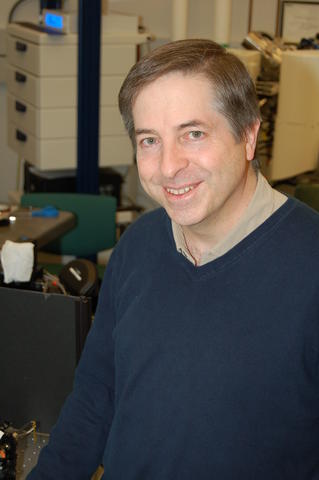
NIST physical scientist Henri Lezec (above), along with Federico Capasso of Harvard, won the 2010 Julius Springer Prize for Applied Physics. Henri Lezec is a project leader in NIST's Center for Nanoscale Science and Technology.
National Institute of Standards and Technology (NIST) physical scientist Henri Lezec and Federico Capasso of Harvard have received the Julius Springer Prize for Applied Physics 2010 for their "pioneering achievements in nanoscale physics and applications." The Springer prize recognizes researchers who have made an outstanding and innovative contribution to the fields of applied physics and has been awarded annually since 1998.
Lezec received the award on Oct. 16, 2010, at the Julius Springer Forum on Applied Physics 2010, a special symposium in honor of the recipients held at Stanford University in Palo Alto, Calif. Attendees heard talks from both prize winners, as well as a series of special lectures given by luminaries in the field of nanoscale physics.
Lezec, who joined the NIST Center for Nanoscale Science and Technology in 2007, received his Ph.D. from MIT in 1992. He has held research positions at NEC Fundamental Research Laboratories, the Centre National de la Recherche Scientifique in France, and at the California Institute of Technology, and he worked in research, development and applications at Micrion Corporation.
Lezec's work spans a broad range of topics associated with the interaction of light with materials and nanoscale structures, i.e. plasmonics and nanoplasmonics. He is also known for pioneering the now widely applied use of the focused ion beam in fabricating nanoscale apertures and other structures.
Lezec's current work centers on the development of novel nanoscale measurement methods using materials that take advantage of the peculiar way that light behaves at the nanoscale. He has built and characterized structures that reverse the direction of refraction of light and created materials that seem to be attracted to and move toward light. For more information about Lezec's work and to view a selected list of his publications, see his bio at https://www.nist.gov/people/henri-lezec.

